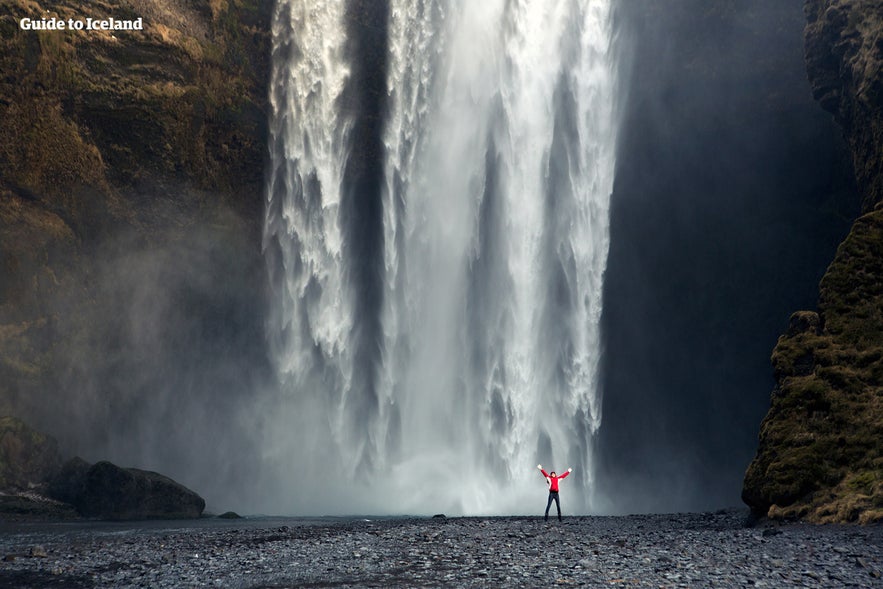
From dramatic glaciers to ancient volcanoes, Iceland is a land of striking contrasts and incredible natural wonders that captivate travelers from around the world. Waterfalls, steaming geothermal hot springs, black sand beaches, and the magical northern lights are just a few highlights of what this unique destination offers.
With so much beauty and adventure at every turn, planning a first-time visit can feel a bit overwhelming, and we're here to help you out with tips, itineraries, and recommendations to make your trip unforgettable! Joining Guide to Iceland's VIP club can also enhance your experience with exclusive offers and discounts.
Why You Can Trust Our Content
Guide to Iceland is the most trusted travel platform in Iceland, helping millions of visitors each year. All our content is written and reviewed by local experts who are deeply familiar with Iceland. You can count on us for accurate, up-to-date, and trustworthy travel advice.
One of the first things to consider is where to stay. Should you base yourself in Reykjavik or venture along the entire Ring Road with self-drive tours? When it comes to exploring, is renting a car the best choice for flexibility, or would guided tours make your adventures easier? What are some of the must-know travel tips before arrival, and what should you know about the local culture?
This guide covers everything you need to know, from choosing accommodations in Iceland to navigating your travel options, helping you make the most of your trip.
Whether you’re interested in exploring Iceland’s iconic sights or discovering more hidden attractions, this essential guide will walk you through everything you should know when crafting your perfect Iceland adventure!
- Discover the 18 Things To Do & Places to Visit In Iceland
- See also: Applying for a Travel Visa to Visit Iceland - A Handy Guide
Best Time to Visit Iceland
 Each season brings a unique experience to Iceland, so the best time to visit will depend on the activities you want to experience. Whether you're dreaming of summer self-drive adventures or want to embark on northern lights tours, here's an overview of what each season has to offer:
Each season brings a unique experience to Iceland, so the best time to visit will depend on the activities you want to experience. Whether you're dreaming of summer self-drive adventures or want to embark on northern lights tours, here's an overview of what each season has to offer:
Summer is Iceland’s high season and, for many people, the best time to visit Iceland. The long days and the midnight sun mean you can explore around the clock. This is a great time to tackle the Ring Road, as all roads and trails are accessible, and the weather is milder.
The vibrant green landscapes and endless days are perfect for hiking, camping, and enjoying Iceland’s festivals. However, since summer is the peak tourist season, you can expect the major attractions to be more crowded.
Fall brings Iceland’s landscapes alive with fiery autumn colors, particularly in September when golden tones blanket the countryside. Crowds thin out, but temperatures remain relatively comfortable for exploring. Fall also brings the chance of late-night northern lights hunting as the evenings start getting gradually darker!
- Check out the ultimate guides to Iceland in Summer and Iceland in Fall
- For an in-depth look, see When Is the Best Time to Visit Iceland?

Winter transforms Iceland into a snow-covered wonderland, ideal for those seeking a serene getaway. With long hours of darkness, winter is the prime season for catching a glimpse of the northern lights. The holiday season brings festive cheer with fun activities and beautiful lights all around Reykjavik.
Spring in Iceland is a time of transition, with the landscape coming to life as snow begins to melt and rivers swell with glacial runoff. The weather is milder, and while the days grow longer, you might still catch the northern lights in early spring.
It’s also the season when Icelandic wildlife starts to reappear; fields fill with newborn lambs, and migratory birds like puffins return to nest along the coasts. Spring is a quieter time to visit, perfect for those who want to enjoy popular sites without the summer crowds.
- Learn more about Iceland in Winter and Iceland in Spring
- See more: Northern Lights in Iceland - When & Where To See the Aurora
Main Things to See and Do in Iceland

The Skogafoss waterfall on Iceland's South Coast is an incredible sight
Now, the real answer to "What should I see in Iceland?" is everything, but that's not really a reasonable option for most people during a first-time visit. You likely won't experience every single thing that Iceland has to offer in one visit, even with tours of the Ring Road that include the Snaefellsnes peninsula and the Westfjords!
For a first-time visit to Iceland, it's a good idea to get to know the main sights along the Golden Circle route and the South Coast. If you have an extra day or two, then you can include tours of the Snaefellsnes peninsula. If you have more than a week, you can easily see the main sights along the Ring Road.
You'll want to enjoy what Reykjavik has to offer, but take time to enjoy nature. Go on hiking tours, explore glaciers, and don't forget to experience the famous Icelandic bathing culture!
- See also: How Many Days to Spend in Iceland
- Discover the Best Attractions by the Ring Road of Iceland
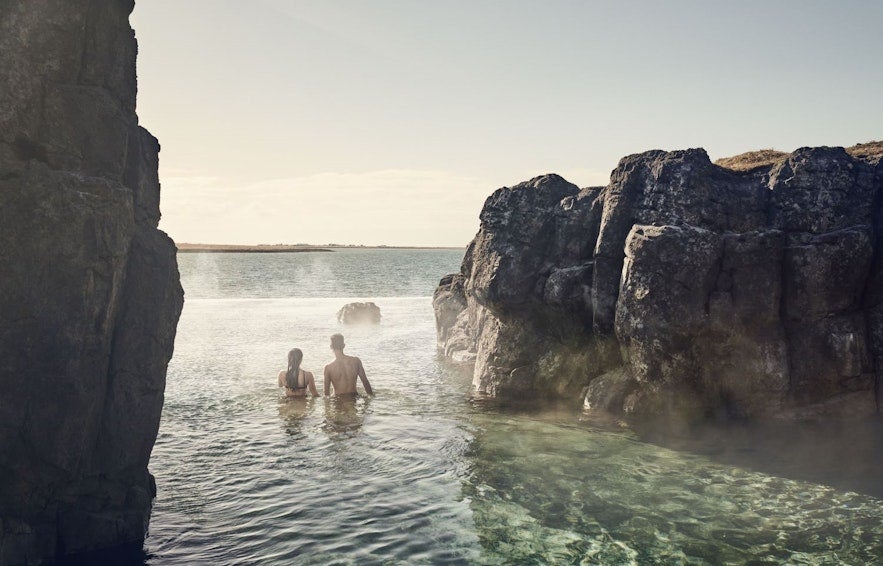 Icelanders have plenty of geothermal hot water that's used for swimming pools all around the country. As learning to swim is an integral part of the Icelandic education system, all small towns around Iceland have access to a warm pool, usually equipped with at least two hot tubs!
Icelanders have plenty of geothermal hot water that's used for swimming pools all around the country. As learning to swim is an integral part of the Icelandic education system, all small towns around Iceland have access to a warm pool, usually equipped with at least two hot tubs!
This love for soaking in warm water has led to the opening of more up-scale bathing places in recent years, and today, there are an incredible amount of amazing hot springs and lagoons to choose from.
While the Blue Lagoon and Sky Lagoon are unmissable stops for a first-time visit, there are great options all around Iceland. The Hvammsvik Hot Springs are increasingly popular thanks to their beautiful natural surroundings and closeness to Reykjavik, and no visit to North Iceland is complete without stopping at the Forest Lagoon!
- See the 30 Best Hot Springs and Geothermal Pools in Iceland
- Check out: Top 14 Things to Do in Reykjavik
What to Know About the Weather in Iceland
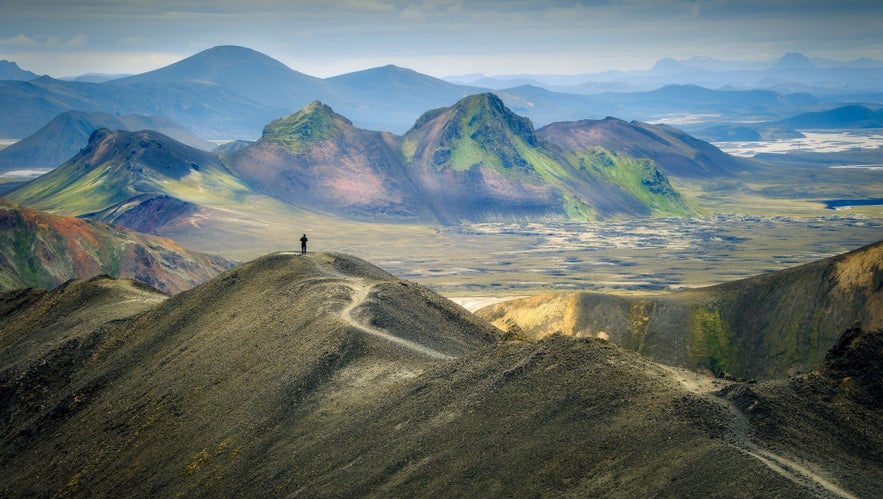 Iceland’s weather is famously unpredictable, with locals sometimes saying you can experience all four seasons in a single day. The island’s location just below the Arctic Circle means that temperatures are cooler year-round, but the Gulf Stream keeps things from getting as cold as other locations at similar latitudes.
Iceland’s weather is famously unpredictable, with locals sometimes saying you can experience all four seasons in a single day. The island’s location just below the Arctic Circle means that temperatures are cooler year-round, but the Gulf Stream keeps things from getting as cold as other locations at similar latitudes.
Iceland’s summer weather is relatively mild, with temperatures averaging 48-59°F (9-15°C). Conditions are generally stable, making it easier to plan outdoor activities like hiking and exploring remote areas, as most roads, including those to the Highlands, are accessible. While quick weather shifts are still possible, you'll be able to explore without much concern.
 Temperature in winter ranges from 23-37.4 °F (-5-3°C), though it can get lower. In Reykjavik and the South Coast, the weather tends to be milder and slightly warmer than the rest of the country.
Temperature in winter ranges from 23-37.4 °F (-5-3°C), though it can get lower. In Reykjavik and the South Coast, the weather tends to be milder and slightly warmer than the rest of the country.
Snowfall can be heavy, especially in the North and Eastfjords, and many areas of the Westfjords are mostly inaccessible. You can expect regular strong winds, icy roads, and snowfall, and if you're considering winter self-drive tours, make sure to keep your itinerary flexible!
- Learn about the Weather & Temperature in Iceland
Account for Daylight Hours in Iceland
Daylight hours in Iceland vary dramatically with the seasons and can significantly impact your travel plans. It's important to be aware of how long the days are so you can make the most of your trip.
In winter, especially from November to January, daylight is limited to about 4-5 hours per day, typically from around 11 AM to 4 PM. This shorter window requires careful planning to make the most of the limited light for outdoor activities and sightseeing. Early sunsets also create excellent conditions for viewing the northern lights, but it’s wise to plan any major excursions during daylight to ensure safe travel, especially on icy roads.
In contrast, summer in Iceland brings the phenomenon of the midnight sun, with nearly 24 hours of daylight from June through early July. This extended daylight offers flexibility, allowing travelers to explore at any hour. For a summer visit, we recommend bringing an eye mask with you as it can be very helpful for sleep. The constant daylight can disrupt natural sleep patterns, and adapting will make your trip more enjoyable!
- Learn more with the Complete Guide to the Midnight Sun in Iceland
Safety in Iceland
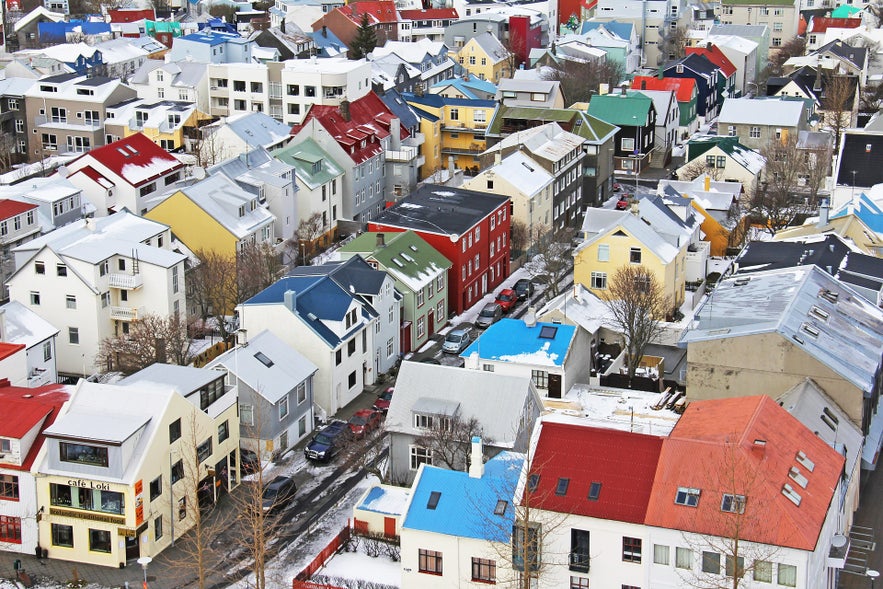 Iceland has been considered the safest country in the world for years, so you really don't have to be worried during a visit. Crime rates are very low, and it's a great destination for those who dream of a solo adventure!
Iceland has been considered the safest country in the world for years, so you really don't have to be worried during a visit. Crime rates are very low, and it's a great destination for those who dream of a solo adventure!
The primary safety concerns in Iceland come from the unpredictable weather and rugged natural landscapes. Sudden changes in weather, high winds, and icy conditions can create hazards, especially for hikers or drivers.
When driving around the countryside in summer, you'll also want to be mindful of sheep that roam freely around nature, as they sometimes stay too close to the road and may dart in front of your car when startled.
Staying informed about the local weather forecast and road conditions, respecting signs and closures, and dressing appropriately for the elements are essential to staying safe while exploring Iceland’s nature.
- See also: How to Drive Safely in Iceland
What To Pack For Iceland
Packing for Iceland requires a focus on layers and weather-resistant clothing, no matter the season. Start with a good base layer, followed by insulating layers like fleece, and top it off with a waterproof jacket and pants.
If you're heading outside Reykjavik, you'll need durable, waterproof boots, especially if you’re exploring waterfalls, glaciers, or hiking trails. Don’t forget warm accessories like hats, gloves, and thermal socks, even in the summer, as Iceland’s weather can change quickly.
When it comes to items other than clothing, there are a few things to keep in mind. Check if you need a converter or power adapter for your electronics during your visit, and consider getting a local SIM card for your phone.
Don't forget items like hand cream, lip balm, and sunscreen to protect yourself from windchill and sun glare, and if you're visiting in winter, bring sturdy crampons for your boots!
If your main goal is to photograph landscapes or capture the northern lights, don't forget a sturdy tripod, an extra battery, or any lenses that you may need. If you plan to bring a drone, check out our guide to flying drones in Iceland to learn about the newest regulations and rules you must follow.
- Learn What to Wear in Iceland: The Ultimate Guide for All Seasons
- See also: What To Pack for Iceland for All Seasons
- Not sure if you need an adapter or converter? Check out Electricity in Iceland: A Practical Guide
What to Know About Languages in Iceland
Icelandic is the official language of Iceland, which is notoriously difficult to learn! But don't worry, you won't need to take a hefty language course before your visit, as you'll get by just fine with English.
The Icelandic language has roots tracing back to Old Norse, and Icelanders take great pride in preserving their language, but you’ll find that most Icelanders speak really good English. This makes communication generally really straightforward for international travelers!
Information signs and menus in restaurants are usually displayed in both Icelandic and English, but learning a few Icelandic phrases like Takk (Thank you) or Góðan daginn (Good day) can be a nice gesture and is usually appreciated! It's also a good idea to get familiar with the names of locations you plan to visit to make traveling easier.
- Learn more about the Icelandic Alphabet and Language Basics
What to Know About The Icelandic Currency

Photo from Flickr, by A.Currell
The Icelandic króna (ISK) is Iceland’s official currency, and you’ll rarely find places that accept foreign money, even in popular tourist areas. Luckily, Iceland is incredibly card-friendly, so you’ll find that most transactions, from restaurants to small shops, are easily handled with a credit or debit card. Just be sure your card has a PIN, especially as some self-service gas stations require it for payment.
While cards are widely accepted, carrying a small amount of cash can be helpful if you plan on visiting flea markets or in case of occasional card issues. Public restrooms at tourist sites also often require a small fee of around 50 to 200 króna, which can only be paid in coins. With some preparation, managing money in Iceland is very simple and hassle-free!
How To Save Money in Iceland
 You may have already heard that Iceland is an expensive destination, and this really is true. It's a good idea to save up before arrival so you'll be able to enjoy your trip with less stress, but there are plenty of ways to make your experience more budget-friendly.
You may have already heard that Iceland is an expensive destination, and this really is true. It's a good idea to save up before arrival so you'll be able to enjoy your trip with less stress, but there are plenty of ways to make your experience more budget-friendly.
One way is to be a customer of Guide to Iceland and remember to use your VIP Club membership!
Get Groceries and Take Advantage of Discounts

Eating out is expensive in Iceland, so you may want to choose accommodation that has access to a kitchen. You can book a holiday apartment, a cozy cottage, or an affordable hostel for your time in Iceland and cook your own meals by shopping in low-cost supermarkets like Krónan.
If you'd like to eat out, there is a way to enjoy many of Iceland's fantastic restaurants for a lower price. If you book your trip through Guide to Iceland, you will automatically gain access to the exclusive VIP Club, which offers great discounts and offers at many restaurants, cafés, bars, and stores!
This means you can enjoy cheaper prices at some of the best restaurants in Reykjavik simply by booking a vacation package, accommodation, rental car, or tour on Iceland's largest travel marketplace!
- Learn about all the discounts you can get with the VIP Club of Guide to Iceland
- See more: Shopping for Groceries in Iceland
- Discover the Top 22 Best Restaurants in Reykjavik
Get a Local SIM Card or eSIM
 One of the sneakiest things to forget about when you travel is international roaming charges for your phone, so don't let this catch you by surprise. The best way to keep a good mobile connection, data, and wifi is by getting a local SIM card or eSIM for your phone.
One of the sneakiest things to forget about when you travel is international roaming charges for your phone, so don't let this catch you by surprise. The best way to keep a good mobile connection, data, and wifi is by getting a local SIM card or eSIM for your phone.
It makes it easy to stay connected with friends and family and get in touch with local businesses. It can also be integral in case of emergencies.
An easy option is to get a prepaid SIM card. You can easily top up as you need. It's also possible to get a prepaid Icelandic phone number if you expect to be making a lot of calls.
You can get your SIM card at Keflavik International Airport on arrival or in stores and gas stations around Iceland.
- Learn all you need to know with the SIM Cards in Iceland: The Ultimate Guide
Get Tax-Free For Purchases
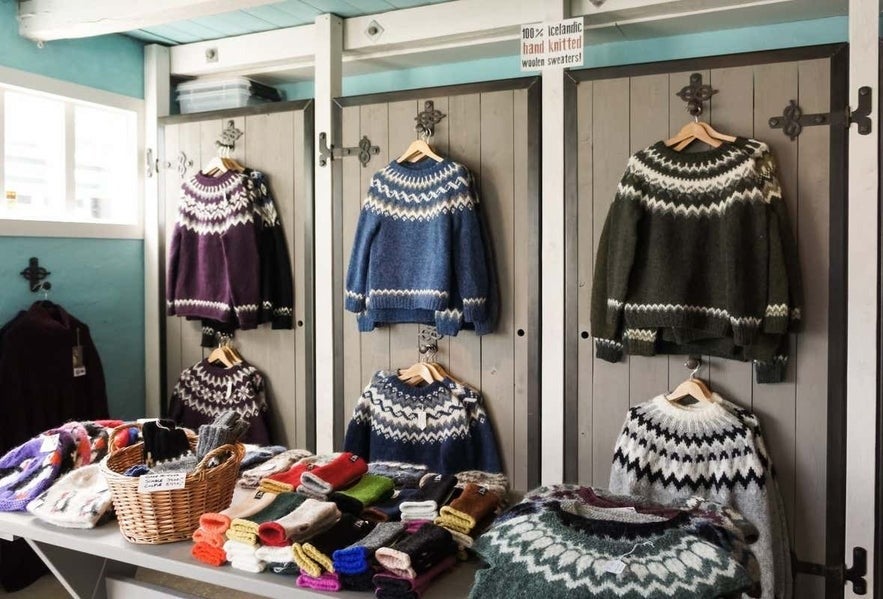 If you plan to do some shopping while in Iceland, remember to ask for "tax-free" for a purchase above 6,000 ISK. This allows you to reclaim the Value-Added Tax (VAT) on eligible items, which can mean a refund of up to 15% on your purchase.
If you plan to do some shopping while in Iceland, remember to ask for "tax-free" for a purchase above 6,000 ISK. This allows you to reclaim the Value-Added Tax (VAT) on eligible items, which can mean a refund of up to 15% on your purchase.
Just ask for a tax-free receipt when you pay, keep it, and bring your receipts and goods to the tax refund counter at Keflavik Airport when you leave. It’s a simple way to save on souvenirs and gifts!
- For more, check out: How Expensive Is Iceland? When to Visit & How To Save Money
- Learn about the Top 10 Souvenirs from Iceland
Should You Rent a Car or Book Tours?
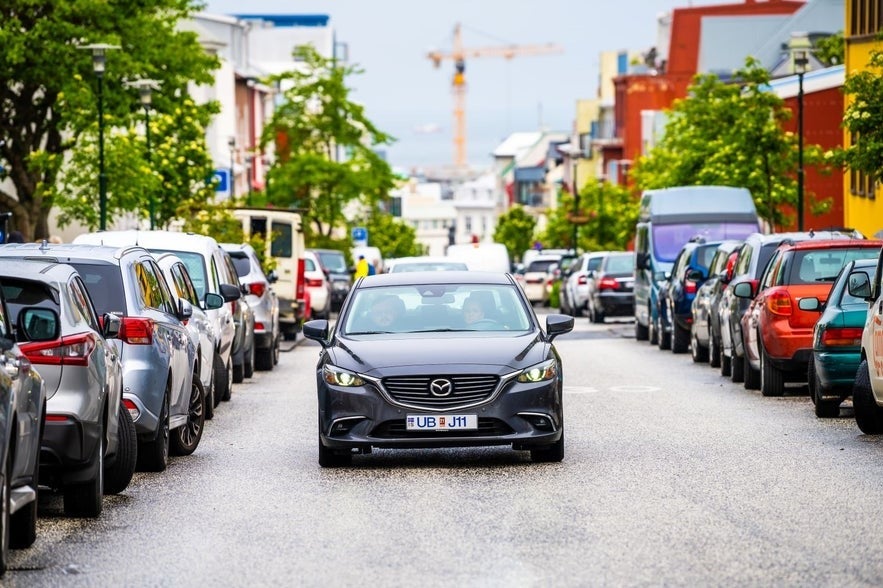
Choosing to rent an affordable car in Iceland offers a lot of flexibility and is perfect for exploring the countryside at your own pace. Roads are well-marked, and main routes are easy to navigate, especially in summer when the weather is nicer.
For winter self-drives, however, driving requires caution due to icy roads. It's best to rent a 4x4 vehicle for safe travel, or you can let someone else take care of the driving with guided tours.
Guided tours are an excellent option if you’d rather skip the rental. From Reykjavik, tours cover major sights, and you can even go on a guided tour of the complete Ring Road!
If you’re mostly staying within Reykjavik, public transportation is pretty reliable, and you can easily use the city buses to get around. A rental car also makes city navigation simple, letting you choose your ideal way to travel in Iceland.
- Check out the Best Guide to Rental Car Sizes in Iceland
- Choose from the Best Advice For Renting a Car in Iceland
Public Transportation in Iceland

Photo from Wikimedia, Creative Commons, by NAC. No edits made.
Within the capital region, the Reykjavik city bus system operated by Straeto makes it easy to get around. It has regular routes covering most of the city and nearby suburbs. However, once you leave Reykjavik, options become scarce, with only a few long-distance buses running to popular destinations, mainly during the summer months.
For those not renting a car, combining Reykjavik’s public transport with day tours to the countryside is often the best way to explore. While convenient in the city, public transport alone won’t cover Iceland’s remote landscapes and attractions.
- For more on public transport in Iceland, check out Reykjavik City Buses: The Ultimate Guide
Where to Stay in Iceland
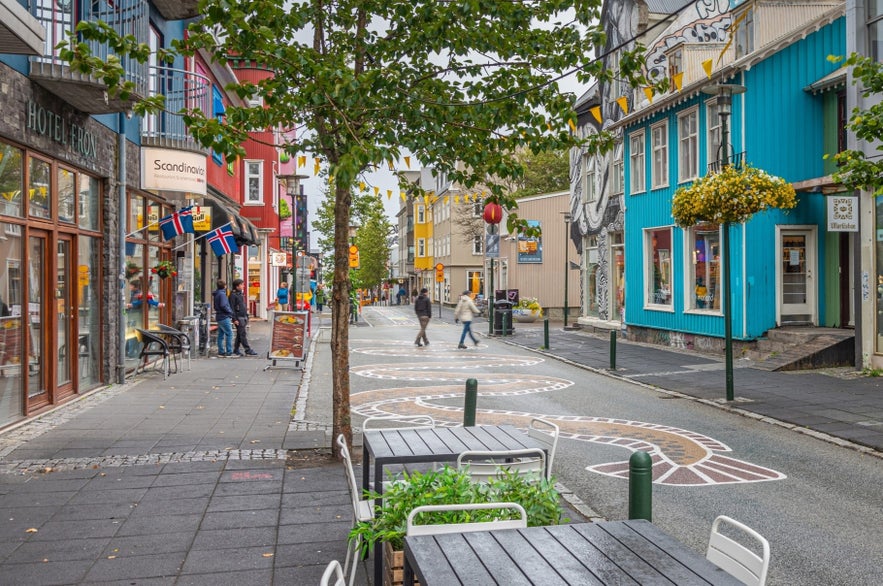 Choosing the right places to stay greatly enhances your travel experience in Iceland. Certain towns make excellent bases for exploring different regions, so it's worth considering your options carefully when planning your trip.
Choosing the right places to stay greatly enhances your travel experience in Iceland. Certain towns make excellent bases for exploring different regions, so it's worth considering your options carefully when planning your trip.
For a first-time visit, it's a good idea to look for accommodations in Reykjavik. Staying in the capital lets you experience all that it has to offer while providing an easy base for day trips to areas like the Golden Circle, South Coast, and Snaefellsnes peninsula.
- Find the Top 10 Hotels in Reykjavik
- See also: Top 28 Restaurants in Iceland
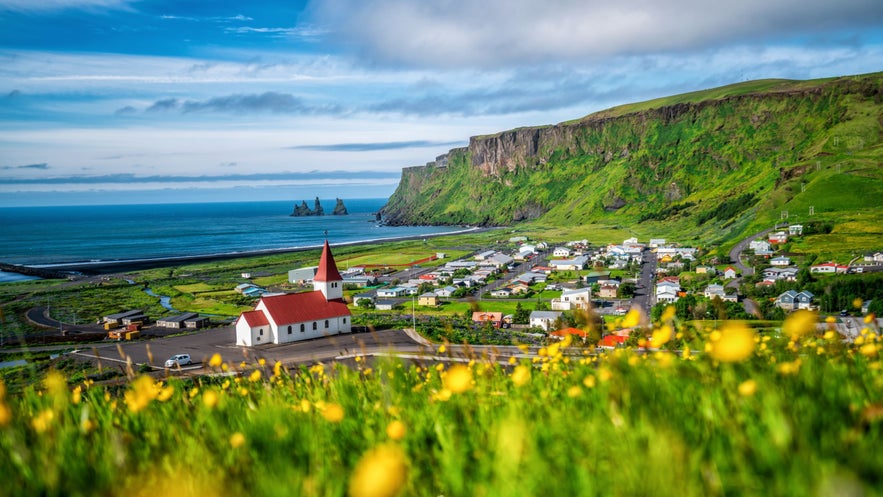
Vik on the South Coast
If you plan to explore Iceland’s diverse regions, some towns are more convenient than others. Along the South Coast, the town of Vik offers a central stop for exploring the area and great restaurants, accommodations, and activities.
Another option is Hofn. This fishing village is known for its langoustine and its closeness to the stunning Jokulsarlon glacier lagoon, which is a must-see in the region.
- Try the Top 6 Restaurants on the South Coast of Iceland
- See also: Top 9 Things To Do in Vik

Seydisfjordur in the Eastfjord
In the Eastfjords, Egilsstadir is the largest town and serves as an excellent base for exploring nearby sights. You'll find accommodations, restaurants, stores, and other services while staying next to the largest forest in Iceland, Hallormsstadarskogur.
For a scenic stay, Seydisfjordur is one of Iceland’s most charming towns in Iceland and the arrival point for the ferry from mainland Europe. It has many beautiful old houses and a lively art scene just a 25-minute drive from Egilsstadir!
- Discover the Best Places to Visit in East Iceland
- Also, check out the Top 6 Restaurants in East Iceland
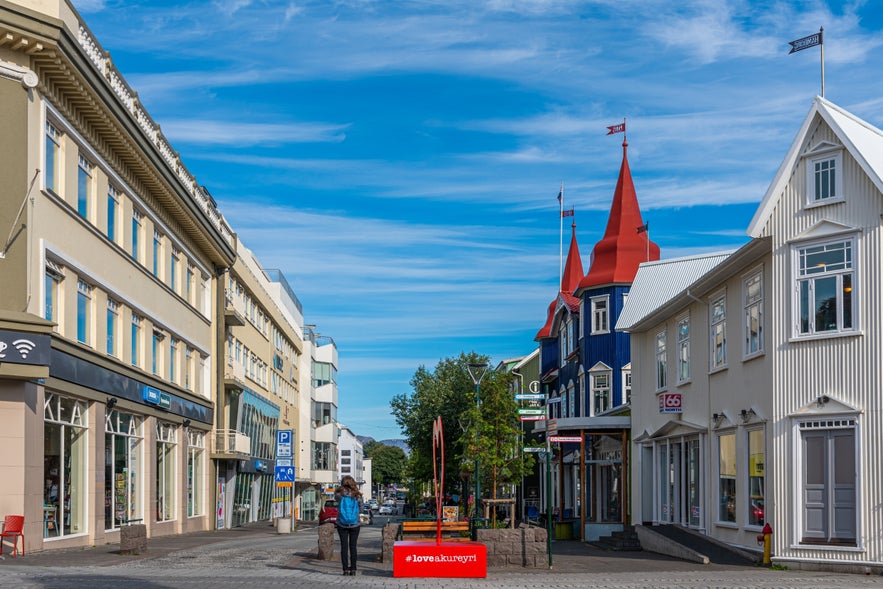
Akureyri in North Iceland
Husavik is a very popular option for a stay in Northeast Iceland. This small town is famous for its whale-watching tours and is a stop on some tours of the Diamond Circle.
In the heart of North Iceland, however, the go-to place is Akureyri. It's the largest town outside the capital region and is sometimes referred to as the "Capital of the North." There are plenty of accommodation options in Akureyri, a fantastic restaurant scene, and fun things to do!
- Discover the 13 Best Things to Do in Akureyri and the Top 9 Restaurants in Akureyri
- See also: 11 Must-See Destinations in North Iceland

Stykkisholmur on the Snaefellsnes peninsula
For those planning to explore the coast of West Iceland, there are great options depending on your itinerary. Along the Ring Road, you can find accommodation in Borgarnes. This town is close to the major attractions of the Borgarfjordur fjord, and it's possible to explore the Snaefellsnes peninsula from there.
If you want to spend a night on the Snaefellsnes peninsula, then consider Stykkisholmur. It's the main town of the region and has a beautiful harbor area framed by colorful old houses, perfect for a cozy stay.
- Learn about the Top 16 Things to Do on the Snaefellsnes Peninsula

Isafjordur in the Westfjords
Further west, in the remote Westfjords, we recommend a stay in the town of Isafjordur. It's one of the larger towns in Iceland and is a comfortable distance from many of the region's main attractions. You can also find charming accommodations all around the Westfjords to enjoy a stay in Icelandic nature.
With each town offering unique experiences and convenient access to key attractions, choosing the right locations can make your Iceland trip more efficient and enjoyable. Plan your stay strategically so you’ll have easier access to Iceland’s diverse landscapes and local culture!
Practical Tips for Visiting Iceland
 A bit of preparation can go a long way in making your Iceland trip smoother and more enjoyable. Here are some practical tips to help you make the most of your visit.
A bit of preparation can go a long way in making your Iceland trip smoother and more enjoyable. Here are some practical tips to help you make the most of your visit.
Book everything well in advance
Iceland’s popularity as a travel destination means that accommodations, tours, and car rentals can sell up quickly, especially in the peak summer season. Some things, like tickets to the Blue Lagoon, may require booking days in advance, and taking care of everything early ensures you get your preferred choices. It's also likely that you'll get better prices if you're ahead of the crowd!
Download offline maps
If you're planning to include more remote areas in your summer itinerary, it's a good idea to download offline maps. You can't count on good mobile service in areas like the Highlands, so downloading offline maps is essential. This will help you navigate easily without needing a constant internet connection. Of course, there's always the option of purchasing an actual travel map instead!
Don't buy bottled water
You absolutely do not have to buy water in Iceland. The Icelandic tap water is some of the purest in the world, and it’s free! Bring a reusable water bottle and refill it as needed. This is a great way to save money and reduce plastic waste.
Don't overplan your itinerary
Iceland’s beauty often lies in the surprises along the way. Avoid packing your itinerary with back-to-back stops that require rushing between locations, or you won't be able to stop at the hidden waterfalls or scenic viewpoints you'll come across along the way.
FAQs About Visiting Iceland for the First Time
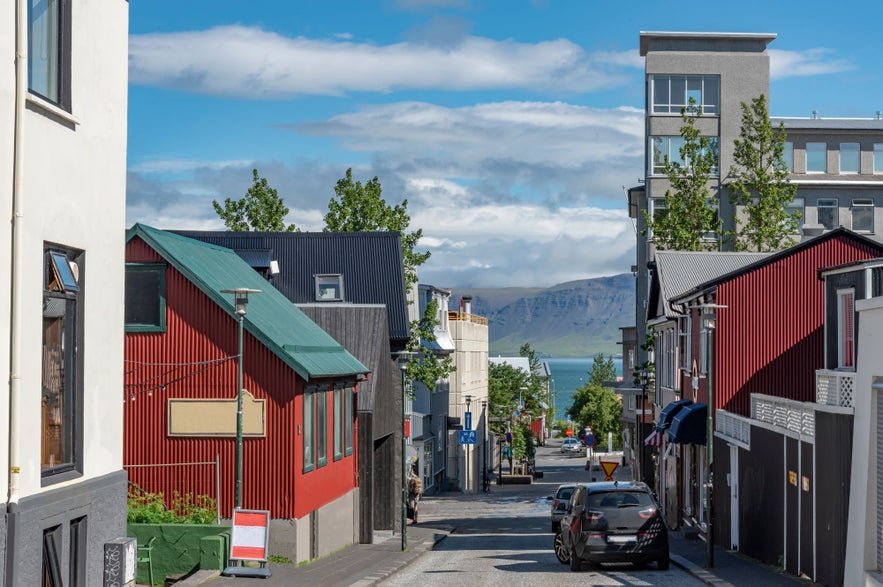 Haven't found the information you were looking for yet? Here are some frequently asked questions for visiting Iceland for the first time!
Haven't found the information you were looking for yet? Here are some frequently asked questions for visiting Iceland for the first time!
Is it easy to see the northern lights in Iceland?
The northern lights are visible in Iceland from September to April, but sightings depend on clear skies and solar activity. Staying in northern lights hotels outside Reykjavik increases your chances, as there’s less light pollution. Even with ideal conditions, the aurora can be unpredictable, so keep expectations realistic to avoid disappointment.
Do I need to tip in Iceland?
Tipping is not customary in Iceland and is not expected. If you really want to tip, then leaving a bit of cash for excellent service is still appreciated.
Do I need to worry about volcanic eruptions in Iceland?
No, you generally do not have to worry about volcanos in Iceland. While the country is volcanically active, eruptions are monitored closely, and alerts are issued well in advance if there’s any threat to public safety. It's best to keep an eye on updates from the SafeTravel website and download their app for your trip.
Do I need a 4x4 vehicle to drive in Iceland?
A 4x4 is not necessary for most summer drives on the Ring Road or to explore popular tourist sites but is highly recommended in winter due to snow and ice. For access to the Highlands (only open in summer), a 4x4 is required, as these routes are rugged and challenging.
Are public restrooms available in remote areas in Iceland?
Public restrooms are available in tourist areas and larger towns, but they can be scarce in remote regions. Some restrooms charge a small fee (often 50-200 ISK), so having a small amount of cash is useful. Plan restroom stops when you’re near towns or visitor centers.
Can I drink alcohol in public in Iceland?
Yes, it is allowed to drink alcohol in public in Iceland, but it’s not very common. Locals usually drink at home or in bars and restaurants rather than in public spaces. keep in mind that alcohol can only be purchased in state-owned liquor stores (Vínbúðin), bars, and restaurants, and in the Keflavik Airport duty-free store.
What would you like to do for your first time in Iceland? Which season would you choose? Have you visited Iceland before, and is there something that we missed? Share your thoughts in the comment section below!













